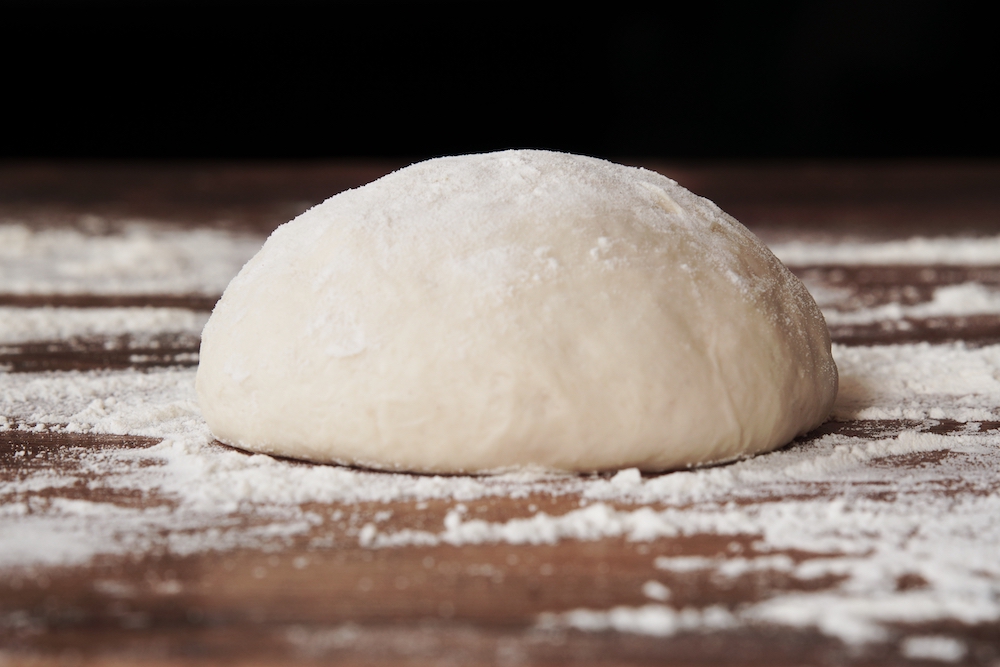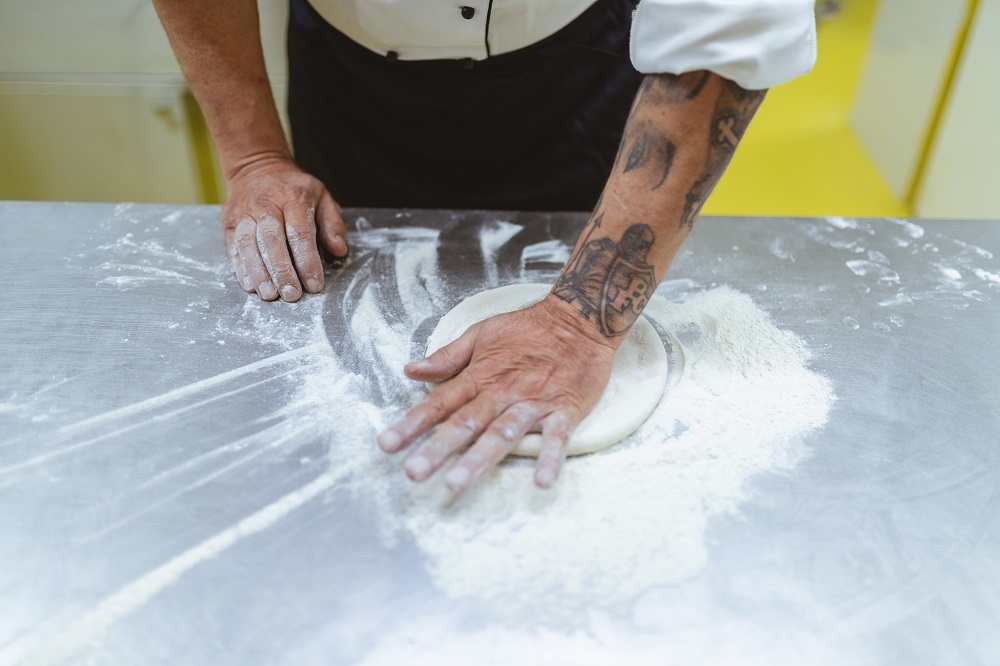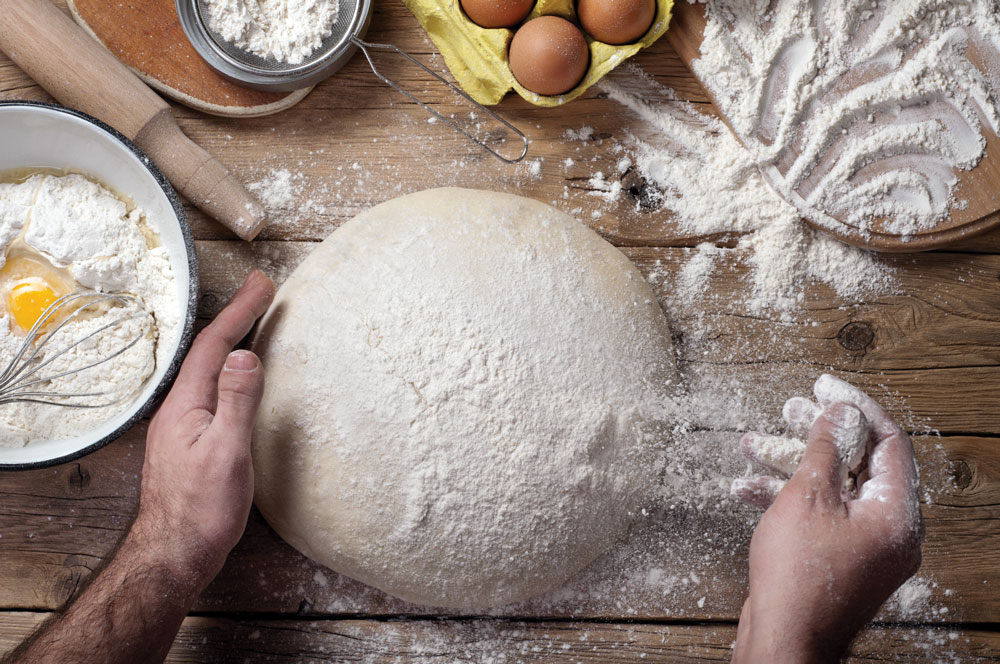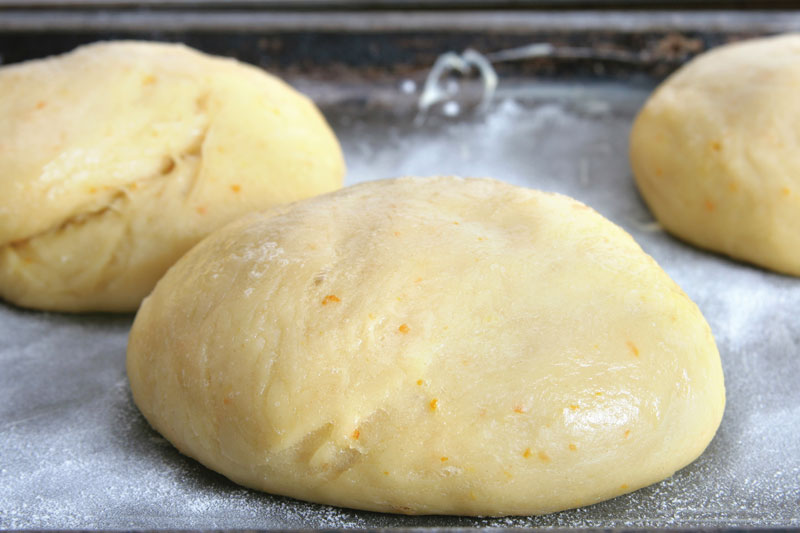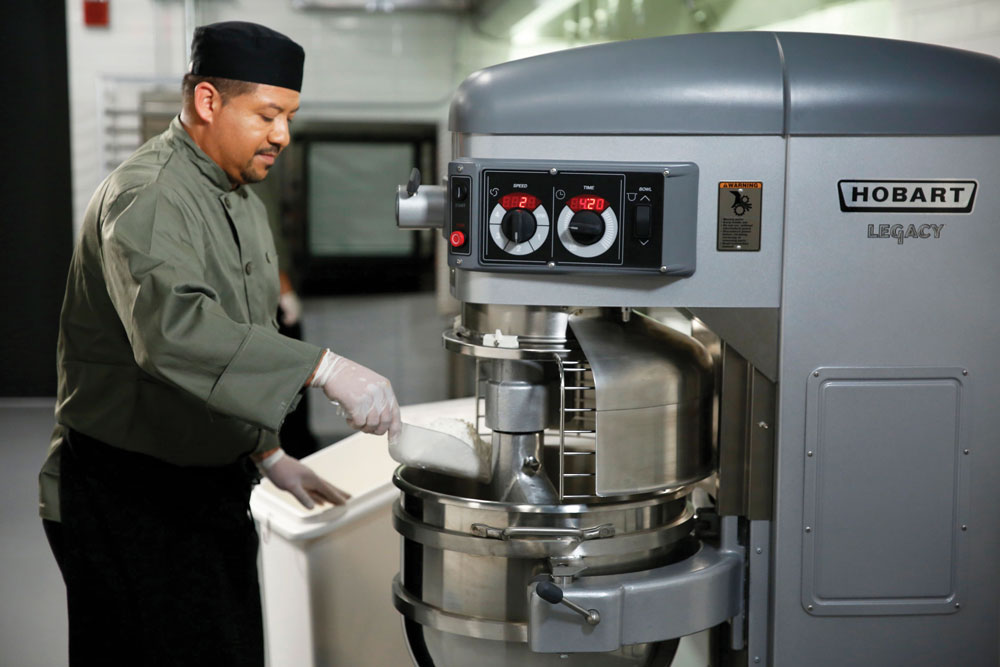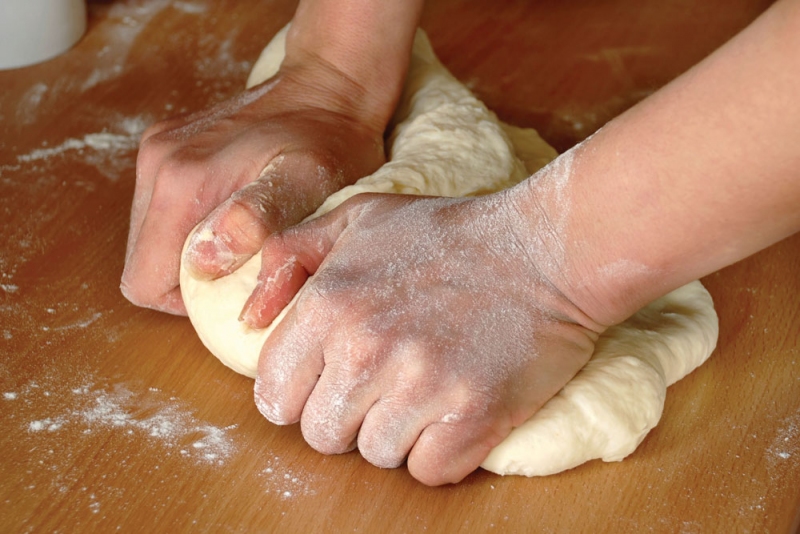QUESTION: I refrigerate my dough and use it over a three-day period. After two days, I do not get the good browning of the crust that I got on the first day. I've tried increasing the sugar, but then the crust gets too dark on the first day if I don't adjust the baking time. What can I do to get a more consistent crust color over the life of my dough?
ANSWER: To answer your question we need to understand what is happening to your dough during the refrigerated storage period. During refrigeration (35-45 °F.) the yeast continues to ferment, but at a very slow rate. During fermentation, the yeast metabolizes (feeds upon) sugars and produces carbon dioxide, alcohol and acids as byproducts. This creates sort of a "double whammy" against crust color development. First, because the yeast has metabolized some of the sugar, there is less sugar remaining to caramelize and develop crust color. Second, the acids formed as yeast byproducts have an inhibiting effect upon the rate of caramelization; hence, less color development is achieved.
To correct this problem, the most practical solution is to eliminate the sugar entirely from the formula, or to reduce it to a minimum level, just enough to sustain yeast activity (1 -1.5 percent based on flour) and replace it with a non-fermenting sugar which can also caramelize to develop crust color. The best sugar to use for this application is lactose (milk sugar). The most economical source of lactose is sweet dairy whey, which contains over 70 percent lactose. Non-fat dry milk would also work well in this application as it contains approximately 50 percent lactose, plus the higher calcium content of the non-fat dry milk would tend to have a better buffering affect upon the acids formed during fermentation, which will also contribute to better crust color development.
The amount of whey to add to the formula will vary somewhat with dough formulation, and baking conditions, but it has been my experience that 3 to 5 percent whey (based on flour weight) gives the most satisfactory results.
QUESTION: Many people use conditioners in their dough. My grandparents never used a conditioner and neither have I. Why should I consider using a conditioner for my dough? What is the advantage?
ANSWER: Until well into the 1960's one of the more common methods of dough production was to mix a dough and allow it to ferment for several hours, usually in the mixing bowl. To use the dough, a piece was cut or torn from the dough and shaped either by hand or dough roller (sheeter). This dough would be used over the next several hours, and because basic deck ovens were the order of the day, it was simply a matter of increasing the bake temperature slightly or baking a little longer if the crust didn't color up just right. Also, when it came to mixing the dough, we may have only mixed a couple of doughs on a busy Friday or Saturday night, which was no big deal even if we had to mix during one of the busy periods.
Today, our mixing and dough handling practices have changed. We're still using high protein "pizza" flour, but we're now mixing our dough at lower temperatures, in many cases 75 to 85 °F. as opposed to the 90 to 95 °F. temperatures used in the past. This can make the dough more difficult to mix out (develop) properly. And because our stores are busier than ever, we no longer have the luxury of being able to prepare fresh dough during the course of the day. Instead, we prepare our dough during"down" time, usually at the end of a day, divide the dough into pieces (saves us the time of having to do it later) and refrigerate the dough for use on the following day(s). With this process, the dough receives a very controlled amount of fermentation, verses the several hours of fermentation common in the 60's. The control of fermentation, combined with the high protein flour has led many operators to experience problems with excessive dough shrinkage or "memory" as it is sometimes called.
This is where "dough conditioners" enter the picture. The most common dough conditioner that we see in the pizza industry is the "reducing agent". These are materials, which when added to the dough, cause it to develop (mix) faster, and to become softer and more extensible, with significantly less shrinkage characteristics. These dough characteristics tend to lend themselves very well to today's convenient and high-speed production styles.
In other cases, many pizzerias are entering the arena of frozen and refrigerated or deli pizzas. The doughs for these pizzas can often present challenges that can be addressed through the use of dough conditioners. In this case the main problem is that of dough weakening or collapse brought about by a less than ideal freezing process or short time exposure of the dough to higher than desired temperatures, such as might be encountered with a deli or take-and-bake pizza while the customer is transporting it to their home. Add to that the fact that the consumer might then refrigerate or freeze the pizza, to be baked later, and one can see why loss of dough strength can be an issue with this type of pizza.
he dough conditioners, which are effective in this application are referred to as "oxidizers", and generally include products such as potassium bromate, azodicarbonamide (ADA), and ascorbic acid (AA).
These products are all very functional at very low use levels, measured in parts per million (PPM), based on the flour weight.
Dough conditioners are a functional part of the modern pizza dough recipe. Whether you use them or not, or even need them is a question that unique to each pizzeria. Times have changed, procedures have changed, and what we expect from the dough has changed as our industry has changed (grown) over the last 25 years and dough conditioners are one of the tools available which can help us face this change. PMQ



